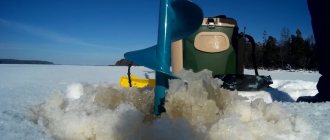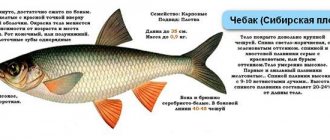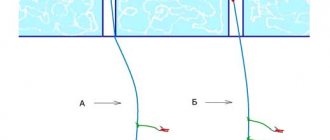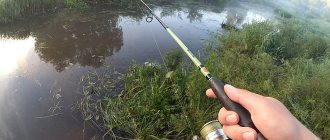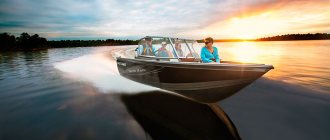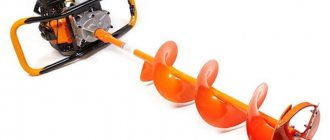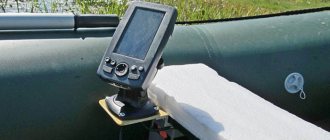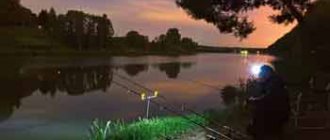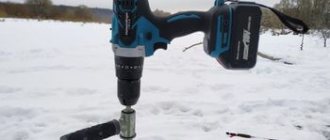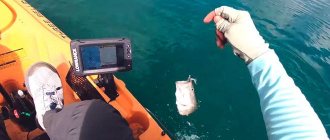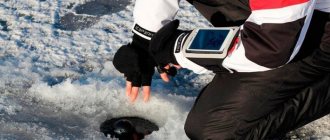What does a float consist of?
In general, all floats consist of three parts: the antenna, the body, and the keel. Even a “goose feather”, which is a hollow tube, can be divided into three parts.
Antenna
In other words, the part visible to the fisherman, which is painted in bright colors and signals a bite. There are a wide variety of antennas:
- Thin and thick
- Hollow and solid
- Replaceable and glued
- Long and short
- Transparent and dyed
The thickness of the antenna is selected depending on the fishing range. The thinner the antenna, the more sensitive the float, but at the same time, if you are fishing at a long distance, then seeing such a signaling device will be problematic.
In this case, it is necessary to use floats with thick antennas, and if there is no wind, in favor of sensitivity, you can put a float with a thin, long antenna, at the end of which a foam ball is installed.
Hollow antennas are used for fishing in currents. Since they have positive buoyancy, when caught on small debris, such a float will most likely not react to this and will not provoke a false hook.
On some models, the hollow antenna of the float can be used to install a firefly for night fishing.
Full-bodied antennas are more common. They also have positive buoyancy, but this buoyancy is close to neutral. This type of antenna shows a bite better, but at the same time, when hooked, it easily goes under water.
Floats with replaceable antennas are more versatile. You can fish with them in the evening, during the day, and even at night.
- During the day it is better to use an orange antenna color
- In the evening the green color is more noticeable
- Well, at night, instead of an antenna, they install a “firefly”
A glued-in antenna is more reliable; if you are not going to fish at night, it is better to install such a float. Its antenna will definitely not get lost when fishing (and this often happens with replaceable ones), and to increase visibility, you can put a cambric on the antenna.
There are also floats with transparent antennas. Such models are very visible from a distance during daylight hours. The light passes through the transparent orange plastic and creates a glowing effect, as if there was a light bulb in the antenna.
You can make a similar antenna yourself from the rod of a helium pen. To do this you need:
- Cut the required length of rod
- Paint the toothpick with varnish in the desired color
- Insert a toothpick inside
- Trim off the excess and apply super glue to the edges.
You can also find floats without an antenna. As a rule, they are used in stagnant bodies of water when fishing at short distances. The advantage of such a float is its resistance to wind, which allows you to catch cautious fish in windy weather.
Body
The body shape of the floats plays a vital role in the selection. Various forms were not invented by chance. Some are good in the current when fishing with a wire, while others are ideal for still water.
Universal shapes for flow are a drop, an olive, a ball, and something similar to a cigar. For standing reservoirs, the “goose feather” shape is good, that is, these floats have elongated shapes and are very sensitive.
Also, when there is wind and rough water, they do not jump along with the waves, which allows the bait to remain in one place. This is relevant when fishing for bream, carp, crucian carp, and other types of fish that do not like the movement of the bait.
When long casting is required, it is better to use a shape that has less wind resistance, this is the inverted teardrop and olive. And if high-quality wiring is more important to you, for example when catching cautious fish, it is better to take rounded shapes.
Keel
The float keel is designed to level the equipment and hold it in this position. A long keel is important when fishing in the current, as it allows you to make high-quality holds, in which the equipment does not move from side to side.
It is important to correctly install a float with a long keel. To do this, several cambrics are put on the line, depending on the length of the keel. The first cambric is placed under the float body. The second one is 5 centimeters lower, and the last cambric should not be put on all the way.
Depending on the length of the keel, there may be several intermediate cambrics. Their number is determined experimentally; the float must move along the line with effort, but at the same time not spoil the line.
A short keel is used when fishing in shallow areas of a reservoir with little current. When fishing in such conditions, a short keel is less noticeable to the fish, and therefore less alarming.
Keels can be made of iron or lighter materials. A float with a metal keel is more stable in the current, and due to its weight, it allows you to use less load. The disadvantage of such a keel is its material; bending such a keel makes it quite problematic to give it its original shape.
When casting long distances, there is a chance that the line will get caught behind the metal keel and bend it when hooking, so when fishing at long distances it is better to use plastic or carbon keels.
What type of antenna is needed for a float?
Catch from a pond with no fish in it.
Photo: Andrey Yanshevsky. If the structural antenna on the float in the finished equipment coincides with the functional one, then it is considered that the float is loaded “correctly”.
In fact, the latter can only be stated from the point of view of the designers of this float, created for specific fishing conditions, equipment and loading.
In practice, very often fishermen have to either underload the float, that is, in addition to the structural antenna, there is also part of the body of the float above the water. Or, conversely, the float is overloaded so that only part of the structural antenna is visible on the water.
If you have to overload or underload the float due to fishing conditions, this indicates that the float is incorrectly selected for this case.
There is no need to try to make a float, no matter how beloved and “tested” it may be, universal and irreplaceable. Probably, after all, it is worth choosing a float that would work effectively under the given conditions when placed under a structural antenna. This is very easy to do if you know “what to fight for.”
The placement of the float under the antenna is done solely in order to achieve maximum sensitivity of the entire equipment.
The next question is what kind of antenna should be, long or short, thick or thin, plain or striped, floating or not. To answer this, let's start with the relationship between the thickness and buoyancy of the antenna itself and the weight of the bait on the hook.
In the case of using bloodworms or maggots, which have practically zero buoyancy, there is naturally no difference in the ambience of floats with different antennas. But as soon as we replace the bloodworm with a bunch of maggots or a grain of corn, the difference in the environment will become more than noticeable.
A float with a thin antenna will almost certainly sink. Here I would like to emphasize the following. Floats are made with antennas of different diameters and heights, not for people with different eyesight, but for fishing with different baits.
| Operating position of the float antenna. Photo: Andrey Yanshevsky. |
But not everything is so simple.
For example, when I catch carp or bream from the bottom with a pole or fly rod using corn, worms or pearl barley, provided that the weather is calm and the depth is shallow, I use floats with a thin and fairly long antenna.
| For such a bait you need an antenna with a decent carrying capacity. Photo: Andrey Yanshevsky. |
Setting the descent using a depth gauge gives an error of a couple of centimeters due to silt. After installing the primary descent, I bait the corn and, if the float begins to sink, then add a descent until the bait lies on the bottom. Very accurate and convenient.
The sensitivity of such equipment is so high that you have to restrain yourself and not hook at the slightest movement of the float. In calm stranded weather, this setting is unsurpassed in efficiency.
If there is a wave, then one bait for anchoring the equipment will not be enough and I put the main sliding sinker on the bottom. Tungsten alloy olives proved to be very convenient here. The olive is selected so that in addition to it in the load there is only one more small feeder, which is also the lower stopper of the olive. That is, the loading is reduced to one point. When biting, the bait provides minimal resistance.
If the swell becomes such that it becomes stressful to watch the thin antenna, then you can take a float with a thicker antenna.
| The float is overloaded with heavy bait. Photo: Andrey Yanshevsky. |
The most important thing here is that most anglers almost always choose an overly thick antenna. There is only one rationale for the choice - it’s easier to see.
Sensitivity to bites due to the high buoyancy of the antenna can drop so much that the float equipment will be inferior in sensitivity to a well-tuned bottom picker equipment.
At the same time, you need to keep in mind that the closer the equipment is located to the shore, the more careful the bites are, and a case occurs when they catch with bottom gear, but not with float gear.
Another example of fishing, now on the current.
Often, especially if the current is quite powerful, the more you can slow down the passage of the equipment, the greater the likelihood of an effective bite. A strong current is very rarely “even” and in order to prevent the float from being pulled under water during free swimming, designs with a floating and thick antenna are chosen. This is especially justified when the depth is shallow.
In such cases, I even use ball floats without keels and antennas. This is if the rig is allowed to float freely.
But the fish doesn’t take the swim and you need to do a hold or delay, during which the float “crawls out” of the water. In fact, the sensitivity of the equipment to bites does not change, but it becomes very difficult to record careful bites.
If the antenna is thin, then you can choose a design in which the upper part of the float body is quite thin. For example, the upper body is comparable or even thinner in thickness than the thick antenna on another float. Observing bites becomes incomparably easier.
When I fish with a technique where the equipment is held in one place, and not necessarily with a plug, then I obviously overload the float with a thin antenna and the number of unnoticed bites is almost zero.
What's the point of all this conversation? And to the fact that many fishermen are left without a decent catch in a good place with good and well-used bait and with good tackle only because they do not see bites.
And the reason for this is the antenna, which is clearly visible to the fisherman. If we leave aside the classic case of bream “laying out” a long float for lovers of special aesthetics from fishing, then in all cases we should strive to use floats with antennas that have a minimum diameter and carrying capacity. But there is no need to go to extremes.
The antenna needed is the one that is needed in the given conditions. This applies not only to diameter and length. By the way, about the length.
An antenna that is too long is only permissible in absolute calm and if you don’t get tired of the constant tangles of the fishing line behind the antenna in the case of a float with two attachment points. With one attachment point everything is simpler and the Kherabuna is an example of this.
The color of the antenna is important. Everything is simple here. If the background of the water is dark, then the antenna is bright yellow. If the sun shines in your eyes, then the antenna is black.
The orange color is the most universal, but it happens that the careful submergence of the float is not visible when a roach or crucian carp tries the bait in clear water. The position of the antenna in relation to the water surface is not visible.
To change the color while fishing when the light changes, you can use interchangeable antennas and waterproof felt-tip pens.
The worst coloration, in terms of observing bites, is striped antennae. The exception is floats for herabuna, where the stripes on the antenna are markers.
On ordinary floats, the stripes on the antennas “blur”, merge, and watching careful bites becomes a lot of strain on the eyes.
The only advantage of floats with striped, long and thick antennas is good sales.
If you really want to learn and fish, then I advise you not to select a float only by appearance and carrying capacity. Each float design is created for its own fishing conditions (depth, current, waves, distance, bait, fish activity, angler activity).
Some floats are more universal, other floats are created for very specific conditions, but in order to fish well, you need to strive to create optimal equipment on every fishing trip.
Andrey Yanshevsky September 7, 2021 at 06:12
How to choose a float for a fishing rod
The choice of float for fishing largely depends on the fishing rod used. Now we will look at which floats to choose for a particular fishing method.
For fly fishing
Based on the characteristics of the fly rod, it can be noted that fishing will be carried out at close range. In this regard, we can conclude that we need a float with a thin antenna, it will be clearly visible, and as a bonus, we will increase the sensitivity of the float.
Next, you need to determine where you are going to fish, on a current or in a still body of water, as well as the fishing depth. Let's consider several options:
- There is a current of great depth: With a long keel and a rounded body
- There is a shallow current: With a short keel and a rounded body
- No current deep depth: Elongated float
- No current, shallow depth: Small elongated models, or a small float with a diamond-shaped body and a short keel.
For Bolognese fishing
Since the Bolognese fishing rod is universal, the above floats can be used on it for exactly the same conditions with a slight amendment. If you fish at a considerable distance (let go far), you will need a thick antenna.
If fishing will be carried out using long-distance casting, you need to choose a body shape that will combine aerodynamic properties and resistance to flow. The golden mean is a float with an “inverted drop” body.
For match fishing
In match fishing, special floats are used - wagglers. The choice of match float largely depends on the fishing range and the depth of the reservoir. If the reservoir is deep-water, floats with their own weight are used.
When fishing in shallows, using your own weight is unacceptable, since when casting, the float will dive almost to the bottom and scare away the fish. In this case, you need to use models with a shortened antenna without its own load.
It is almost impossible to choose a universal float in match fishing, so you should have several models with you and select them depending on the conditions. There is no need to worry about wind and current, as the wagglers deepen the line.
Studying the float body
For the equipment to work effectively and the fish to quickly capture the bait, it is necessary to control the float, even if the weather is characterized by strong winds, and the body of water has a strong current or waves. The control of this fishing accessory depends on its body.
Floats, depending on the body, are divided into: oblong, pear-shaped, teardrop-shaped and bulbous. Elongated floats respond well to bites when the fish lifts the bait, which is associated with slight inertia. We use it for shy fish.
The teardrop float acts as the most versatile signal float accessory - used in strong currents. The working position is maintained even in bad weather. In addition, with the help of such a float it is easier to manipulate the bait.
Good control of the float is also determined by the position of the guide rings. The high position of the ring does not allow the float to come out during manipulations in the current. If fishing is accompanied by difficult weather conditions, then choose a float with a ring attached to the antenna.
Thanks to the short keel, the float quickly takes its working position when casting the tackle. If you are going for high-speed bleak fishing, then such a float will be an ideal option. The high stability of the float is accompanied by a long keel - it reacts less to waves and stops at the required point without unnecessary “dives”. A long keel is good on large canals, medium-flow rivers and deep lakes.
Choice according to fishing conditions
Floats for standing reservoirs and for reservoirs with a current differ in their characteristics. Models for current will work poorly in still water, and on the contrary, floats for still water will not work at all in current.
For the current
On rivers, floats with a long keel are most often needed, as they stabilize the equipment. At the same time, the use of purlin-shaped floats is unacceptable, since snags often occur in the current.
It’s quite easy to distinguish current floats, here are their differences:
- Long keel
- Multiple attachment points
- Round body
Depending on the strength of the current and the casting distance, the shape of the float can be from diamond-shaped to spherical. The stronger the current, the rounder the body. From the universal and most common, you can choose the “inverted drop” shape.
This model has good aerodynamic properties, and at the same time holds perfectly when held.
For standing water
In still water there is no need for resistance to flow and you can focus on the sensitivity of the float. All models with an elongated body work in standing reservoirs. These are cigar-shaped floats and a goose feather.
Such body shapes have minimal resistance when biting and are loaded very accurately. Thanks to this, the fish do not feel our equipment, which naturally affects the catch.
Float shape
Currently, the choice of floats on the fishing market is huge. The most common forms:
- Olive - this float can be called universal, suitable for both still water and reservoirs with a current. Behaves steadily in waves, wind and ripples on the water surface.
- Ball-shaped - also refers to the universal type of floats. Suitable for current and still water. Stable in waves and wind.
- Drop – suitable for fishing in lakes and ponds. It has a downward center of gravity and a long keel, stable during waves and ripples on the surface of the water. Used for fishing at depths exceeding one and a half meters.
- Inverted drop - designed for fishing at a depth of more than three meters in bodies of water where there is a current (rivers, canals).
- Spindle – used in standing water (ponds, reservoirs). Due to its design, the float is very sensitive and is used for catching cautious fish at a depth of up to three meters.
- Straight - used for fishing in calm weather on small ponds and lakes and at a depth of up to two meters.
- Flat is the most stable float in strong currents. It has the shape of a disk on which an antenna is attached - a marker, as well as a keel located at an angle of forty-five degrees.
- Waggler is a single name for all floats that have only one fixation point on the fishing line. This type of float can be used when fishing on lakes and rivers
- A stick is a float designed not for long casts, but for long swims under the constant control of the angler.
- Sbirulino (or as it is also called “bombard”) is a special float for spinning fishing, which is designed for loading light equipment equipped with flies, light twisters or wobblers.
How to choose a float for crucian carp
Why did I mention this particular fish? It's simple, crucian carp is considered the most cautious and unpredictable fish, and the float must meet certain requirements:
- Have excellent sensitivity.
- Show a bite on the rise.
- Have minimal resistance in the water when hooking.
Elongated models have these characteristics, but the goose feather has proven itself best.
This is where I’ll end the article about floats; if you have any questions, I’ll be happy to answer them. See you again, dear fishermen!
